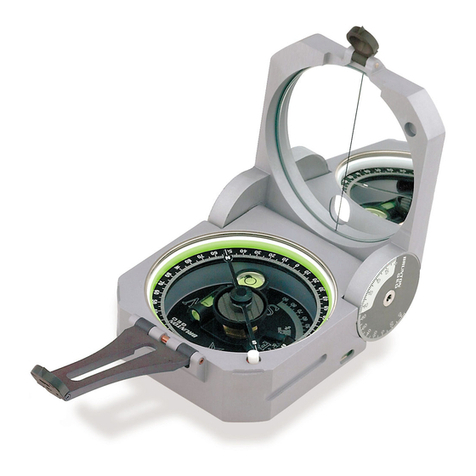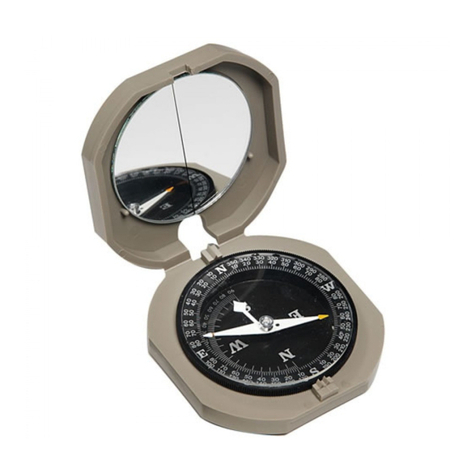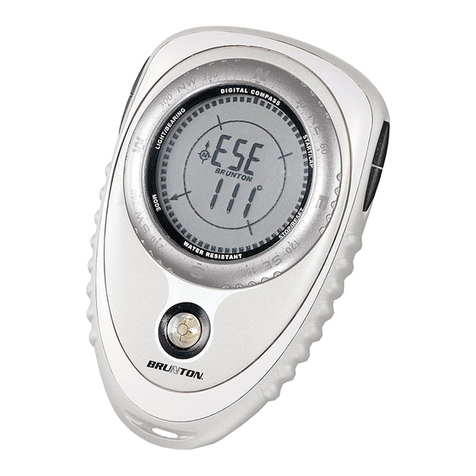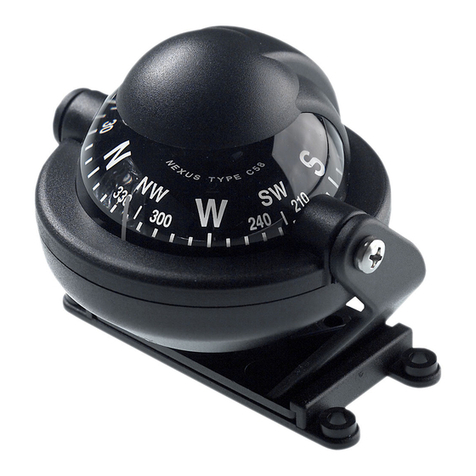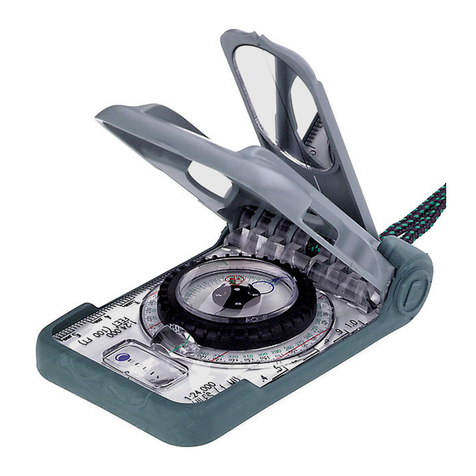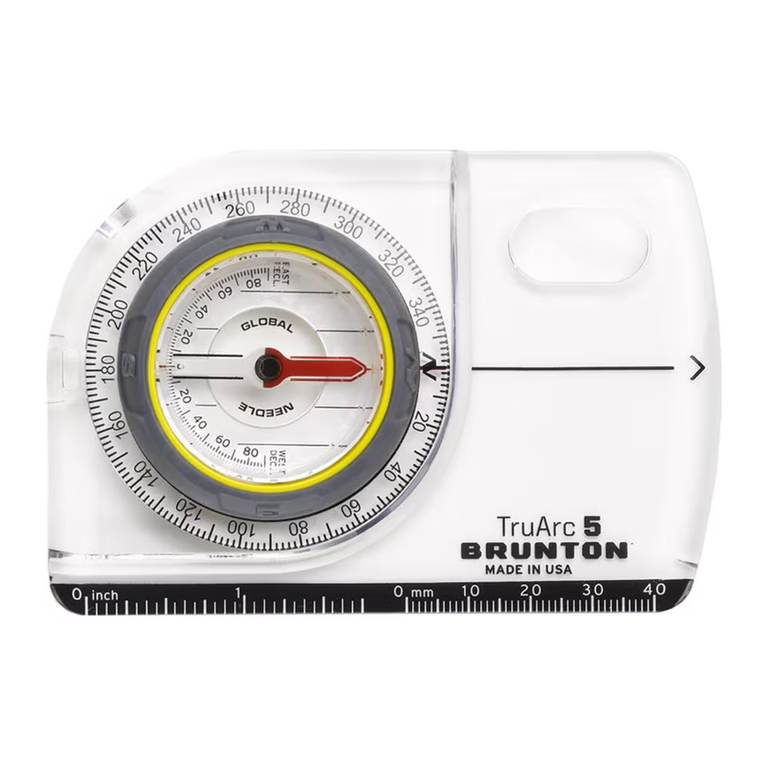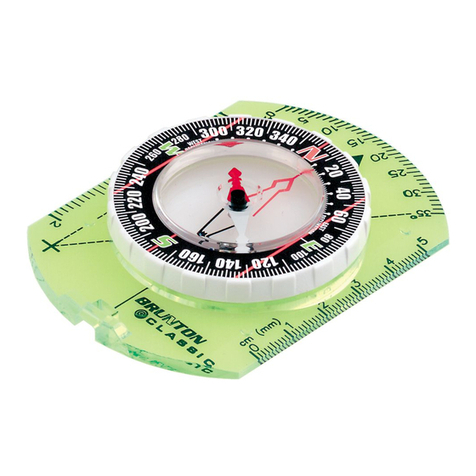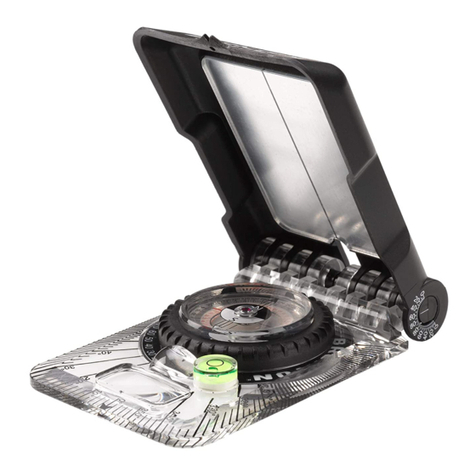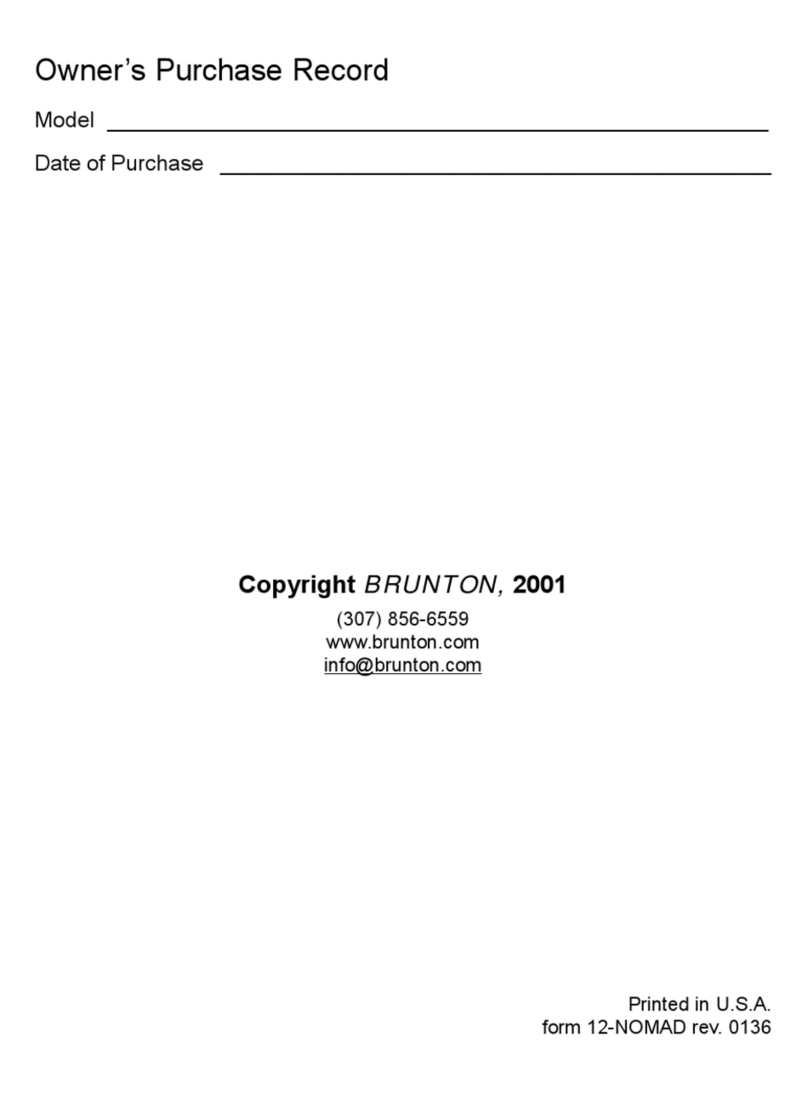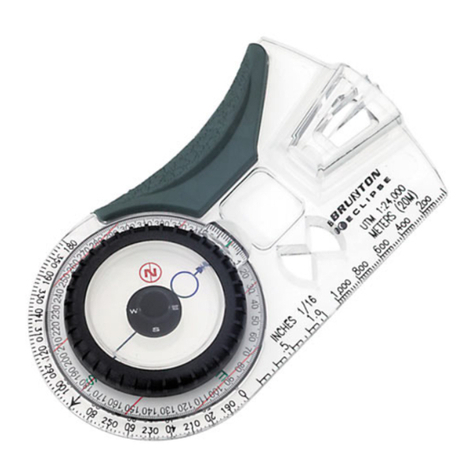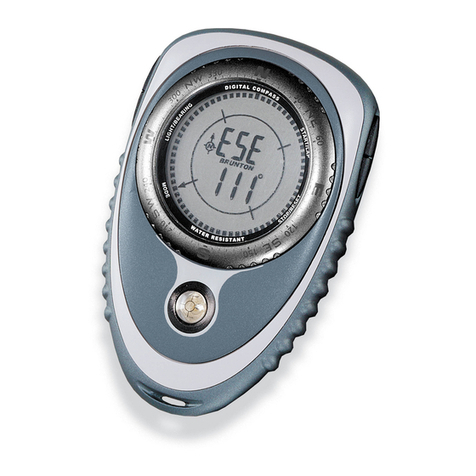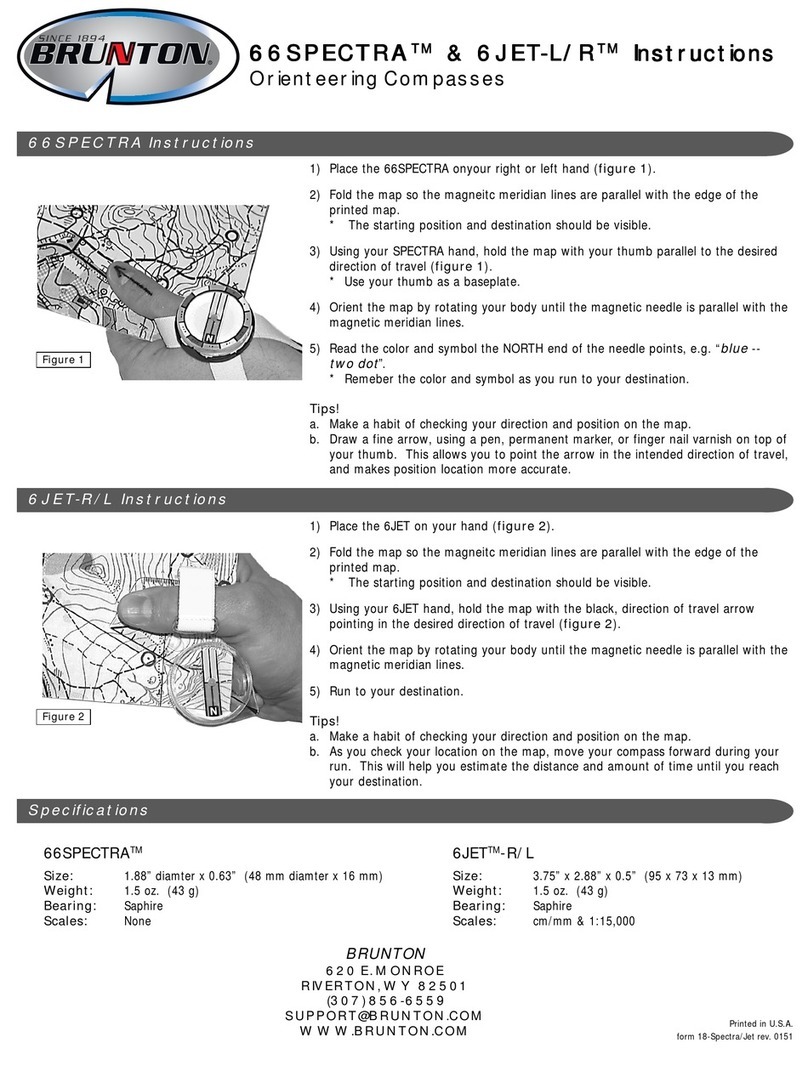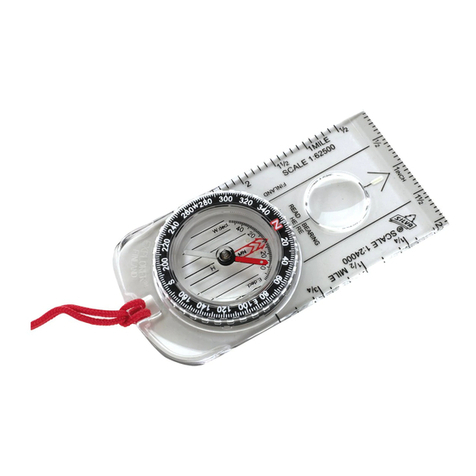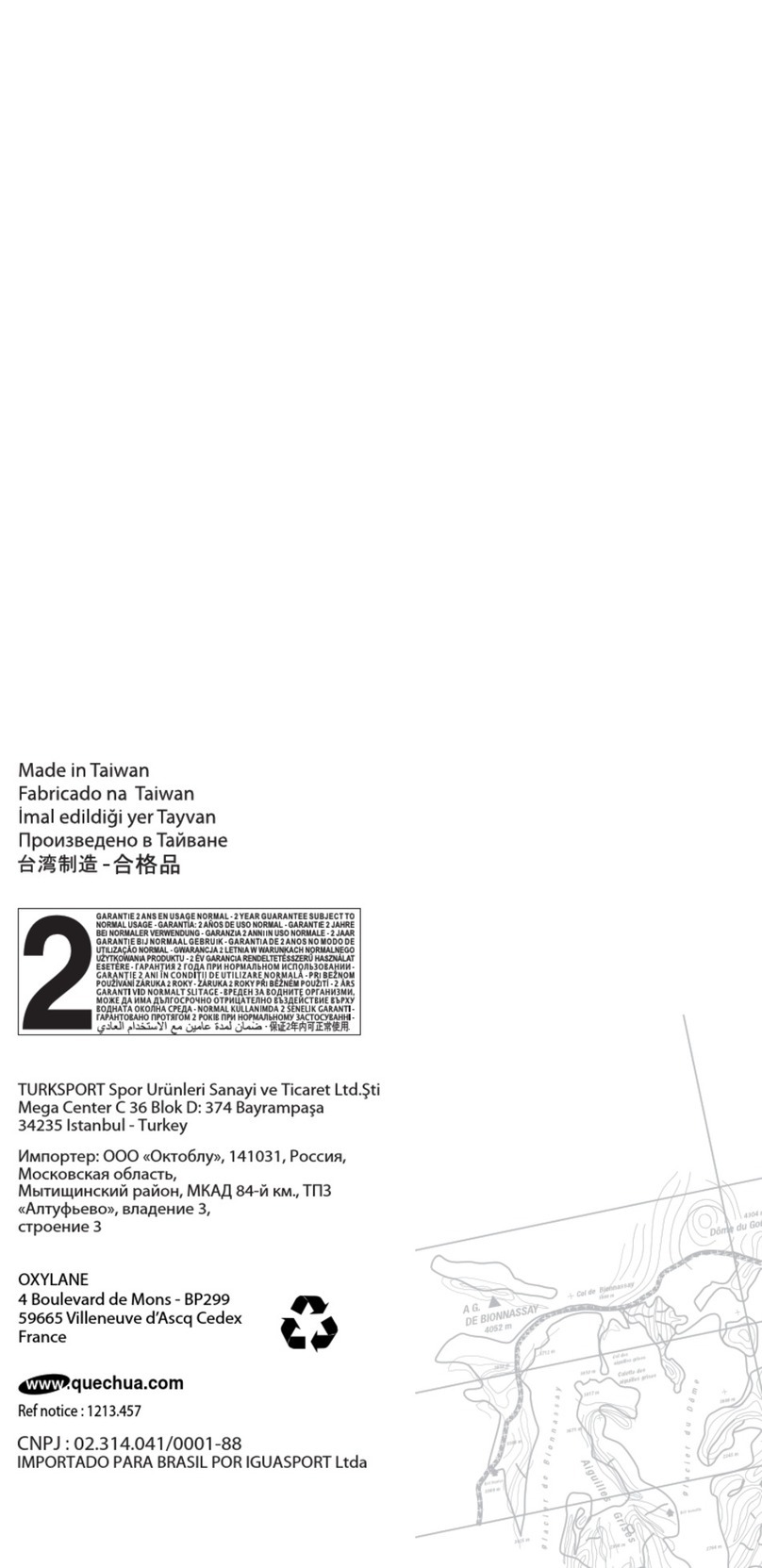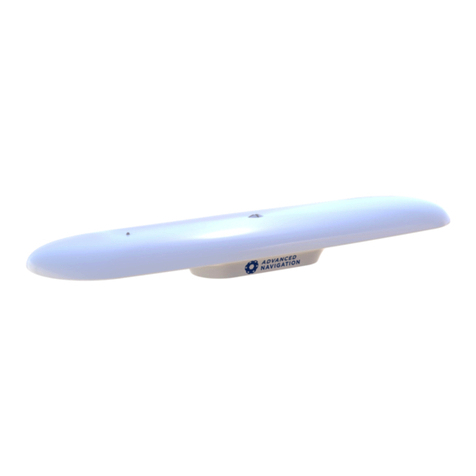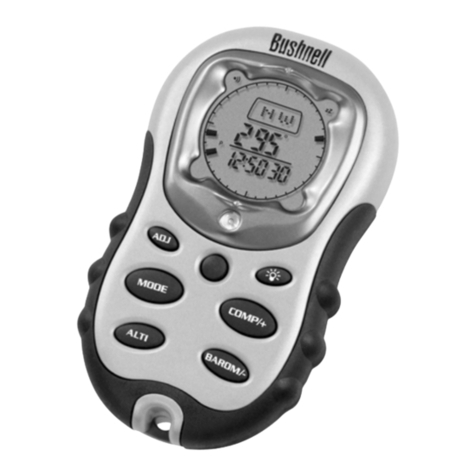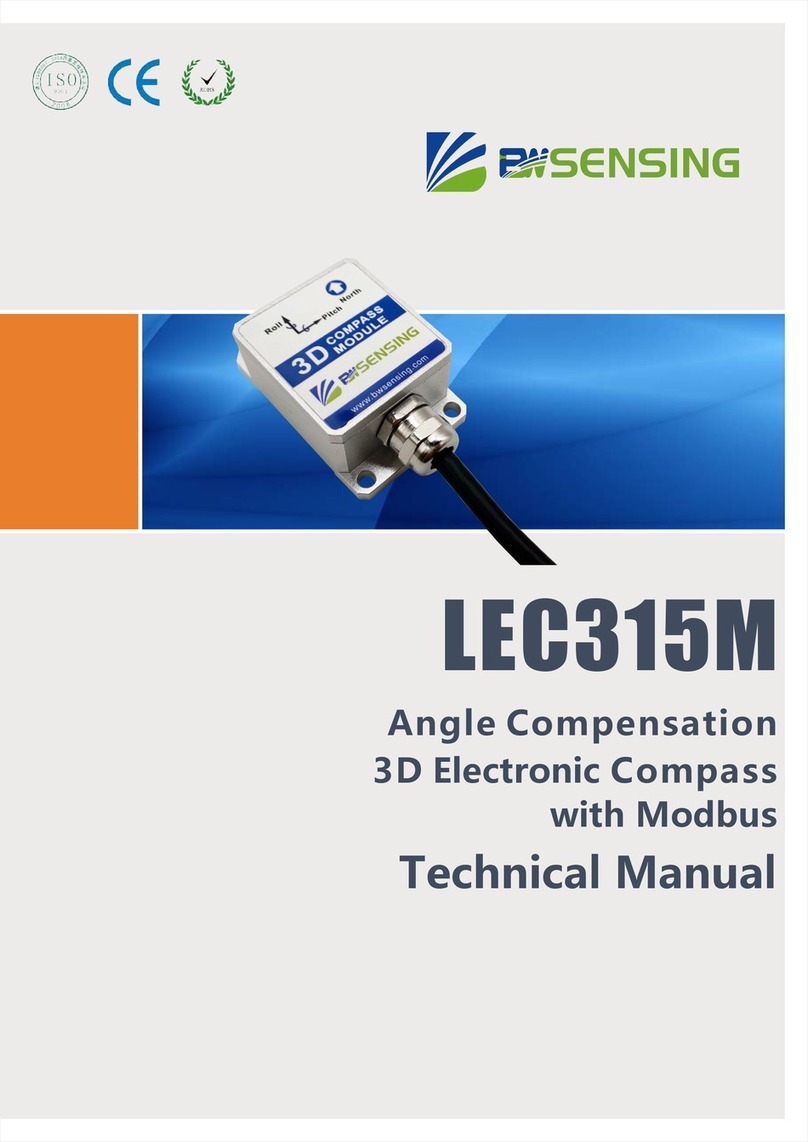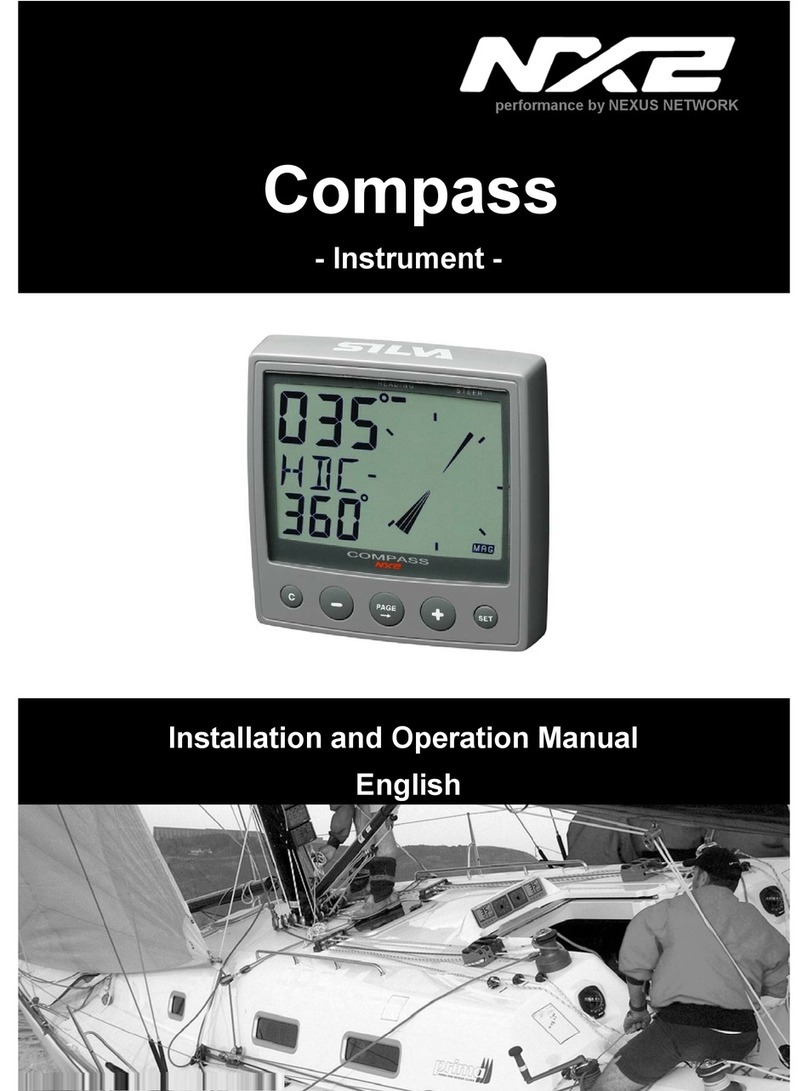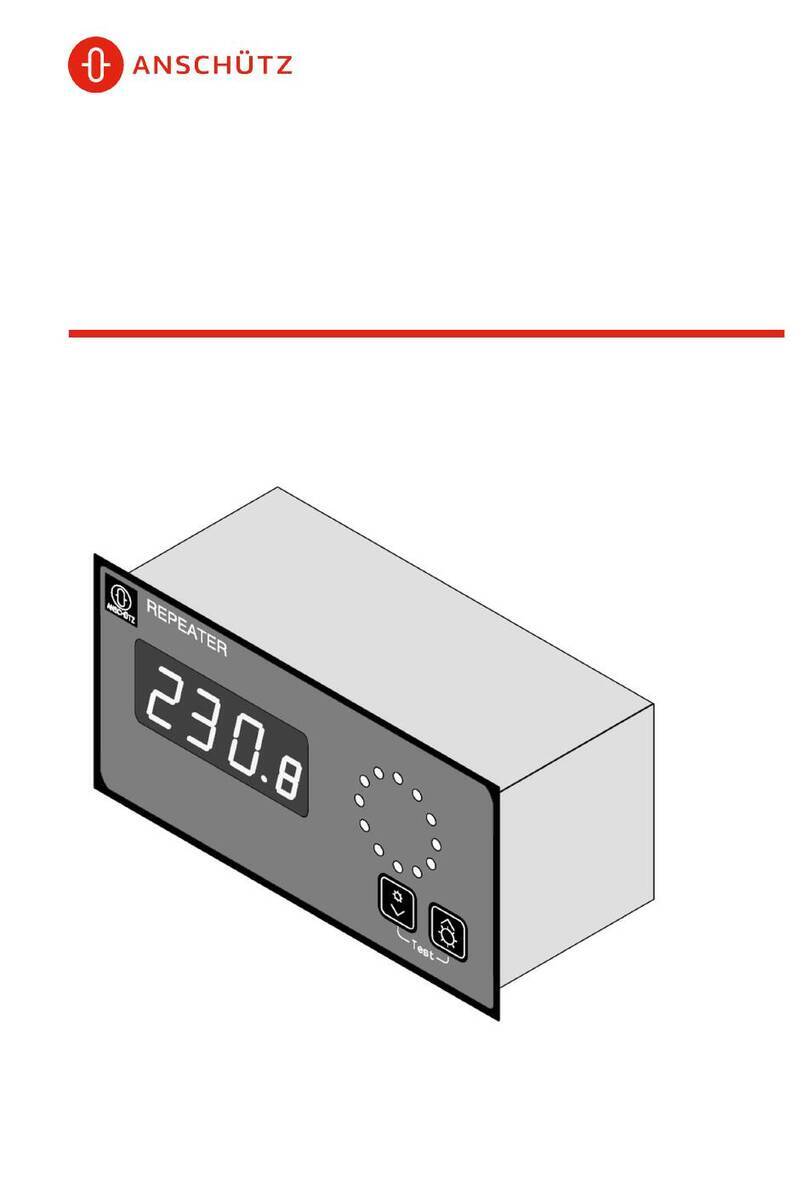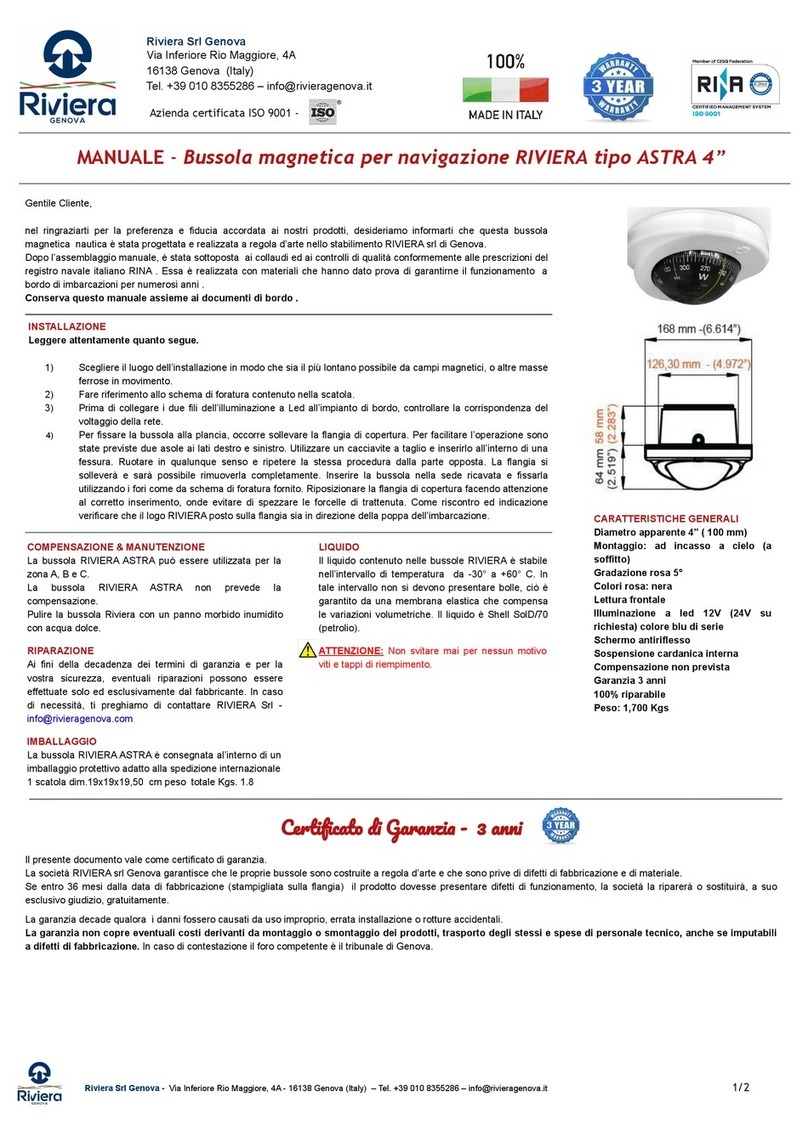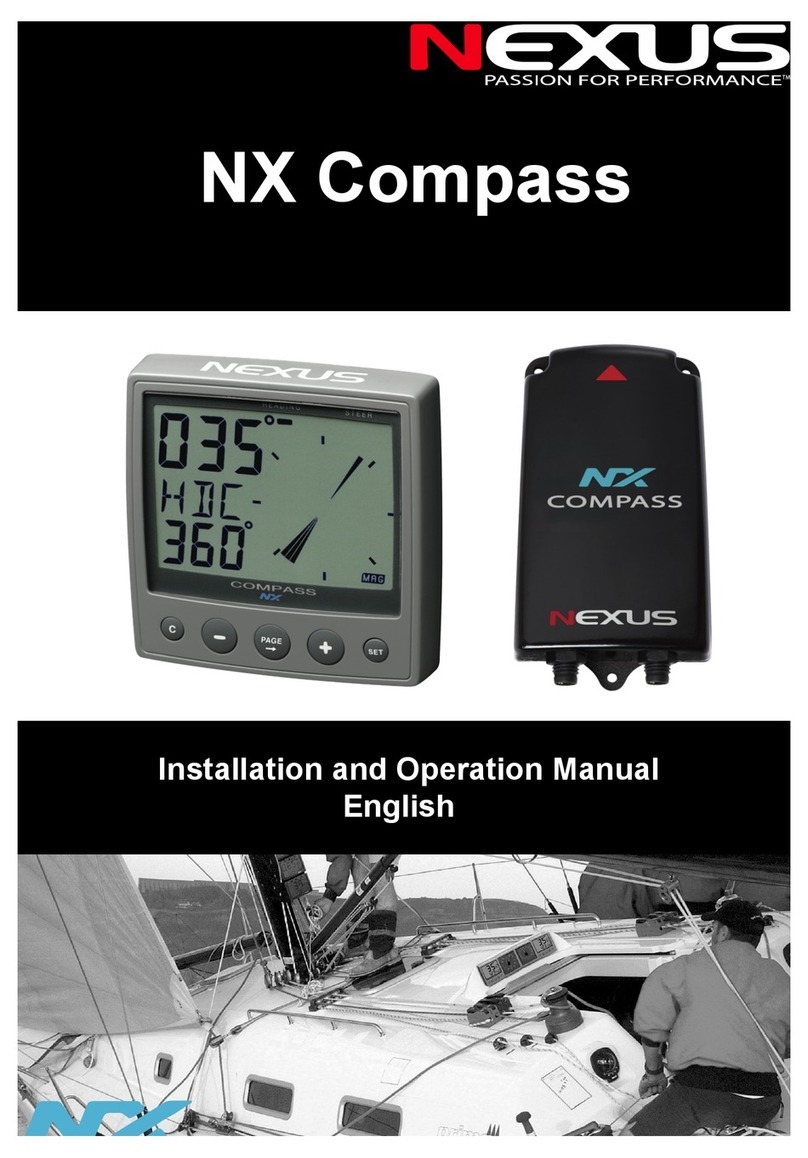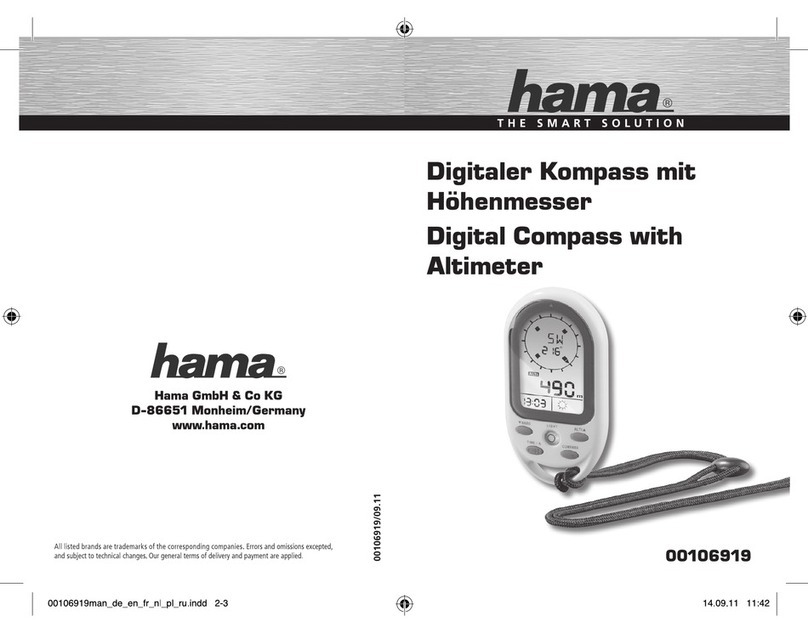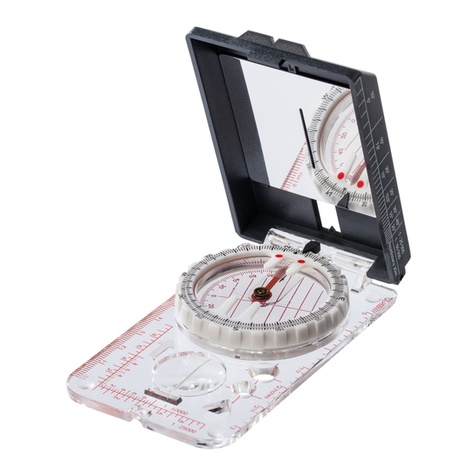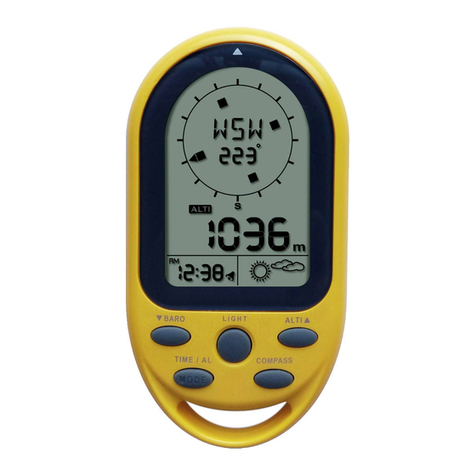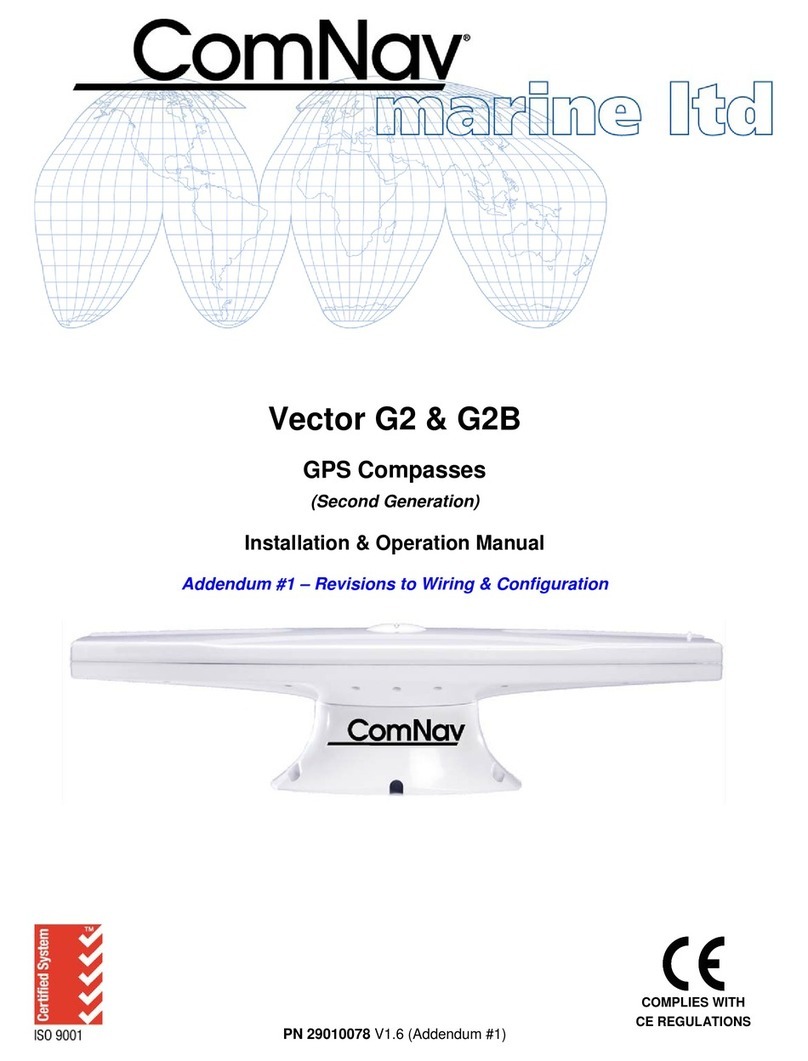2. Find minutes by determining whether the 30 or 60 minute line is closest to a degree
marking. See arrows in figure 21. A Loupe or magnifier may be required.
Since the 30 minute line is closest, the total angle is 26° + 30 (26° 30 or 26.50°)
4.1.b -- percent grade
Use the percent grade scale above the vernier.
1. Read nearest percent grade at the verniers
center line -- 50%, circled. (Fig 22)
Another method is to calculate the percent grade
using the angle of inclination and the equation:
Percent Grade = [ tan(
"#
) x 100 ]
Measure the angle of inclination,
"
= 26.5°. Then, calculate the tangent of 26.5° using a cal-
culator. Finally, move the decimal two places to the right (multiply by 100).
Example: Tan( 26.5°) = .499 = 49.9% Grade
4.2 Inclination Using Prismatic Compass
The GEO transit can also measure angles of inclination without a tripod.
1. Position cover to approximately 45°.
2. Open large sight and flip its peep sight to 90° from
the large sight. (Fig 23)
3. With large sight pointing toward you, position transit
at eye-level with cover open to the right. (Fig 23)
4. Sight object behind transit, aligning small sight,
window and peep sight with object.
5. In the mirror, adjust vernier until bubble is centered in
the long level .
6. Read inclination at verniers center line.
The Brunton GEO Transit is capable of measuring vertical angles with an accuracy better
than 1°, with readings to 10 minutes. Also, it
displays percent grade, without calculation.
The bottom scale is incremented from 0° to 90°
and is used for vertical inclination. The scale on
the vernier is also used for vertical (inclination)
measurement, but it is incremented from 0 to 60
minutes. (Fig 19) Closer to the center, the sec-
ond scale increments from 0% to 100%. This
scale is the percent grade scale.
4.1 Inclination and Percent Grade Using Tripod or Monopod
Use a tri/monopod for increased inclination accuracy.
1. With GEO transit attached to the tripod tilt the ball
and socket mount 90°. (Fig 20)
!Transit should be on its side.
2. Lock into position using the clamp screw.
3. Align sights with object behind transit. (Fig 20)
4. Adjust vernier until bubble is centered in long level.
5. Read inclination at verniers center line from the
degree scale -- 26° to 27°, circled. (Fig 21)
4.1.a -- inclination to the nearest 30 minutes
When 30 minute accuracy is required, use the
vernier scale (0 -- 60 minutes with 10 minute incre-
ments).
1. Read inclination at verniers center line --
26° + __ , circled. (Fig 21)
1211
Figure 19
Figure 21
Figure 22
Figure 20
Figure 23
TO EYE
4 -- Inclination & Percent Grade Measurement

